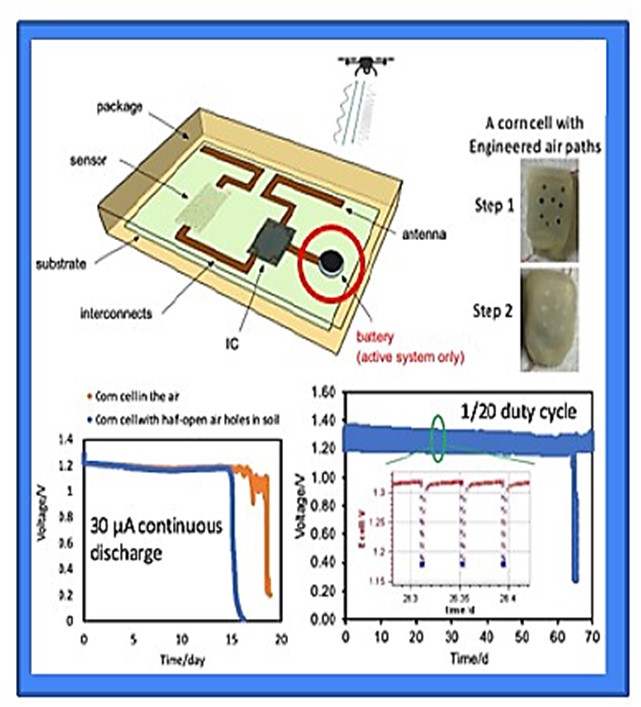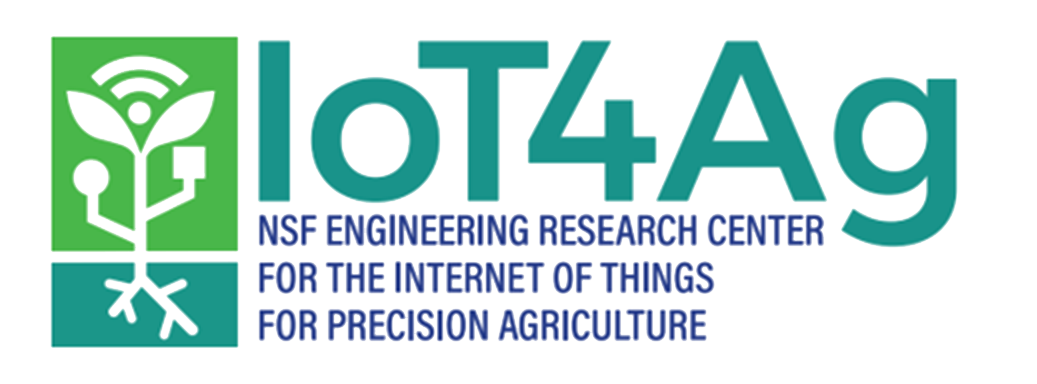Sensor Technology Enhances Crops and Farming
Outcome/Accomplishment
The growth and yield of crops are highly dependent on the physical and chemical properties of the soil and microclimate where plants are grown. Researchers are developing biodegradable, inexpensive, wireless sensors and communication techniques for keeping track of soil moisture in the air and underground, enabling farmers to monitor root development for better and more nutritious crops. This path-breaking work is sponsored by the U.S. National Science Foundation (NSF)-funded Internet of Things for Precision Agriculture (NSF IoT4Ag) Engineering Research Center headquartered at the University of Pennsylvania (Penn).
Impact/Benefits
Stress conditions such as drought and nutrient deficiencies, as well as biotic stresses related to pests and diseases, are among agriculture’s greatest challenges. However, such stresses are highly variable, both spatially and temporally. The new techniques being developed by NSF IoT4Ag researchers enable spatial and temporal mapping of complex plant and environmental variables affecting crop yield and stress resilience. The technique employs low-cost, zero-/near-zero power sensors that may be distributed throughout the field and remotely queried. The sensors can operate below the soil surface as well as in the air and will use wireless communication systems to transmit the information. Soil moisture is also important for determining the tractability of agricultural vehicles.
Explanation/Background
This stage of research involved testing air batteries in the air and corn cells below the surface. Researchers achieved more than two months of continuous function for these techniques. They also began integrating the air batteries with LoRaWAN, a low-power, wide-area networking protocol that connects battery-powered devices to the internet. The next step is to deploy the system in an NSF IoT4Ag testbed at Penn.
Location
Philadelphia, Pennsylvaniawebsite
Start Year
Microelectronics and IT
Microelectronics, Sensing, and IT
Lead Institution
Core Partners
Fact Sheet
Outcome/Accomplishment
The growth and yield of crops are highly dependent on the physical and chemical properties of the soil and microclimate where plants are grown. Researchers are developing biodegradable, inexpensive, wireless sensors and communication techniques for keeping track of soil moisture in the air and underground, enabling farmers to monitor root development for better and more nutritious crops. This path-breaking work is sponsored by the U.S. National Science Foundation (NSF)-funded Internet of Things for Precision Agriculture (NSF IoT4Ag) Engineering Research Center headquartered at the University of Pennsylvania (Penn).
Location
Philadelphia, Pennsylvaniawebsite
Start Year
Microelectronics and IT
Microelectronics, Sensing, and IT
Lead Institution
Core Partners
Fact Sheet
Impact/benefits
Stress conditions such as drought and nutrient deficiencies, as well as biotic stresses related to pests and diseases, are among agriculture’s greatest challenges. However, such stresses are highly variable, both spatially and temporally. The new techniques being developed by NSF IoT4Ag researchers enable spatial and temporal mapping of complex plant and environmental variables affecting crop yield and stress resilience. The technique employs low-cost, zero-/near-zero power sensors that may be distributed throughout the field and remotely queried. The sensors can operate below the soil surface as well as in the air and will use wireless communication systems to transmit the information. Soil moisture is also important for determining the tractability of agricultural vehicles.
Explanation/Background
This stage of research involved testing air batteries in the air and corn cells below the surface. Researchers achieved more than two months of continuous function for these techniques. They also began integrating the air batteries with LoRaWAN, a low-power, wide-area networking protocol that connects battery-powered devices to the internet. The next step is to deploy the system in an NSF IoT4Ag testbed at Penn.

